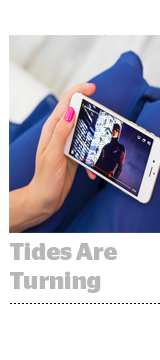
Innovid customers will now get to measure their YouTube video ads, thanks to a partnership with Google that was revealed Tuesday.
The video advertising platform has joined more than 20 other vendors in the Google Measurement Partners program, an initiative that launched last week to allow outside parties – including comScore, DoubleVerify and Nielsen – to evaluate metrics across Google’s advertising products.
Vendors in the Measurement Partner program can evaluate viewability, reach, brand safety, brand lift, sales lift, app attribution and marketing-mix modeling, Google said.
Google said the Measurement Partner program will give marketers more choice in assessing advertisement effectiveness across more devices in the Google ecosystem.
VAST-ly Different Viewing Habits Spur Changes In Video Measurement
In other Innovid news, four verification companies have partnered with the IAB, MMA and Innovid to support standardized video viewability measurement.
The current VPAID standard of viewability puts advertisers in a tough spot.
VPAID, the code layer that tells a video player which ad to show, isn’t effective on mobile. Innovid and its partners want to support measurement in the Video Ad Serving Template (VAST) inventory instead, simply because VAST is more commonly used on mobile and connected-TV devices. The VAST inventory is also known as the Open Measurement Interface Definition, or OMID.
When it comes to measuring on mobile and connected TV, relying on VPAID simply won’t work. That’s why Innovid and its partners – comScore, DoubleVerify, Integral Ad Science and Oracle’s Moat – are calling on the advertising industry to “rejigger the standards” and support VAST, Innovid’s VP of solutions and partnerships, Michael Tuminello, told AdExchanger.
“There’s been a big gap in the marketplace where the viewability and the transparency – the brand safety that brands rely on to get what they pay for – has not been available on mobile,” he explained.
Research has increasingly shown that younger video consumers have shifted loyalty from desktop to mobile, causing advertisers, publishers and everyone in between to make some much-needed adjustments.
In January, Hearts & Science CEO Scott Hagedorn called Gen-Xers and millennial video consumers “The Unreachables,” because industry standards for TV measurement aren’t accurately capturing their video consumption. Without proper measurement standards in place, advertisers are pretty much throwing money into the void.
Publishers have been slow to embrace VAST since the IAB released its first iteration in 2008. It’s possible that some publishers didn’t understand the technical differences between versions. But publishers’ main concern was that earlier VAST iterations didn’t resolve issues around interactivity and verification.
The latest version – VAST 4.1 – could open up new audiences to advertisers. This is critical for brands looking to reach mobile video consumers internationally, especially in heavily populated countries like China.
“Everyone is interested in pressing this drumbeat,” Tuminello said. “Everyone is interested in getting better brand safety and viewability at scale, especially in a huge swath of inventory that is currently unmeasurable.”
The next step is to get more publishers to support the shift. Inventory sources including MoPub and Inmobi are already on board.
This post was syndicated from Ad Exchanger.


More Stories
Ibotta Crosses The IPO Finish Line – Now The Real Work Begins
Commerce Can No Longer Be Where Creative Goes to Die
Is This TikTok Ban, Like, Happening?; DTC Darlings Lose Their Retail Darling